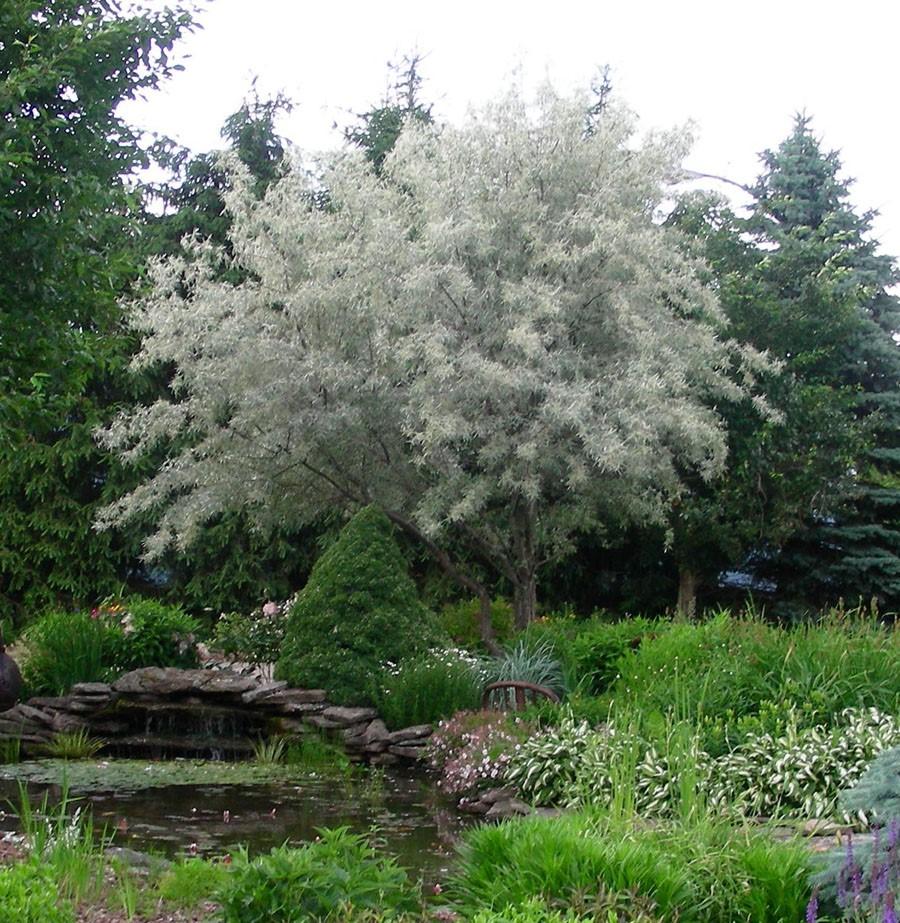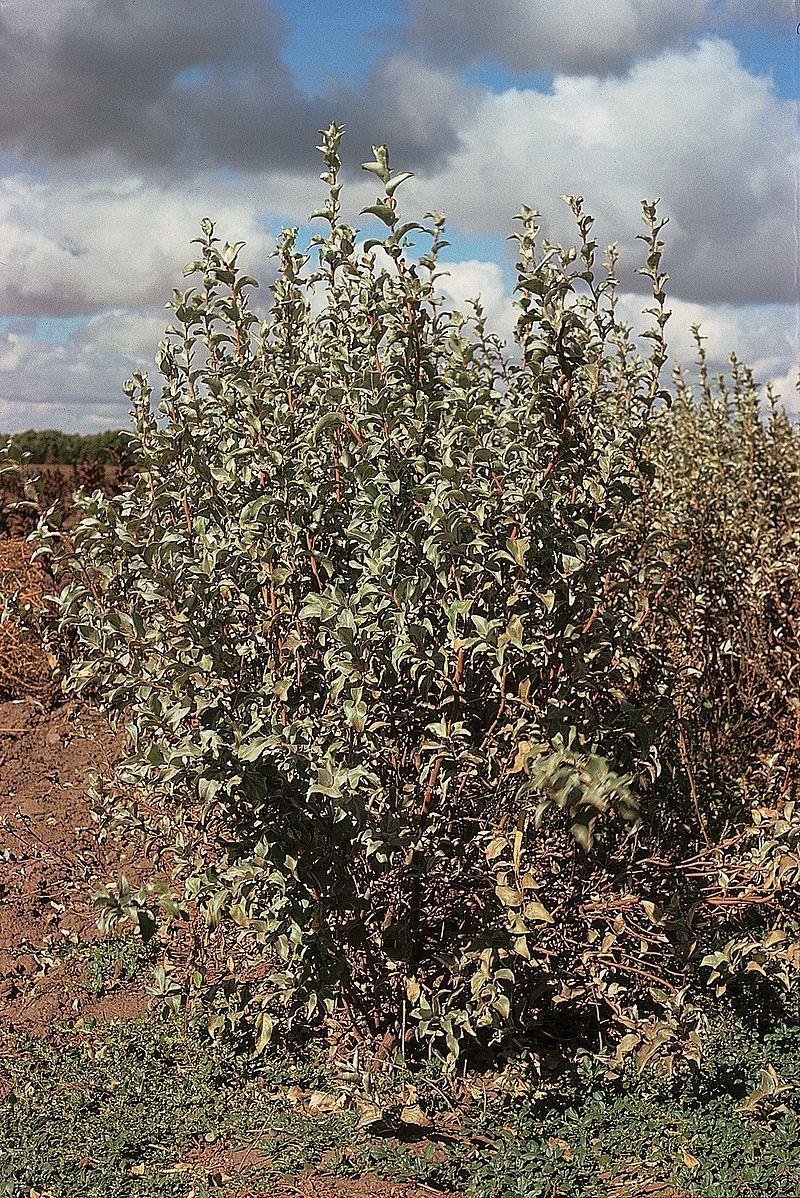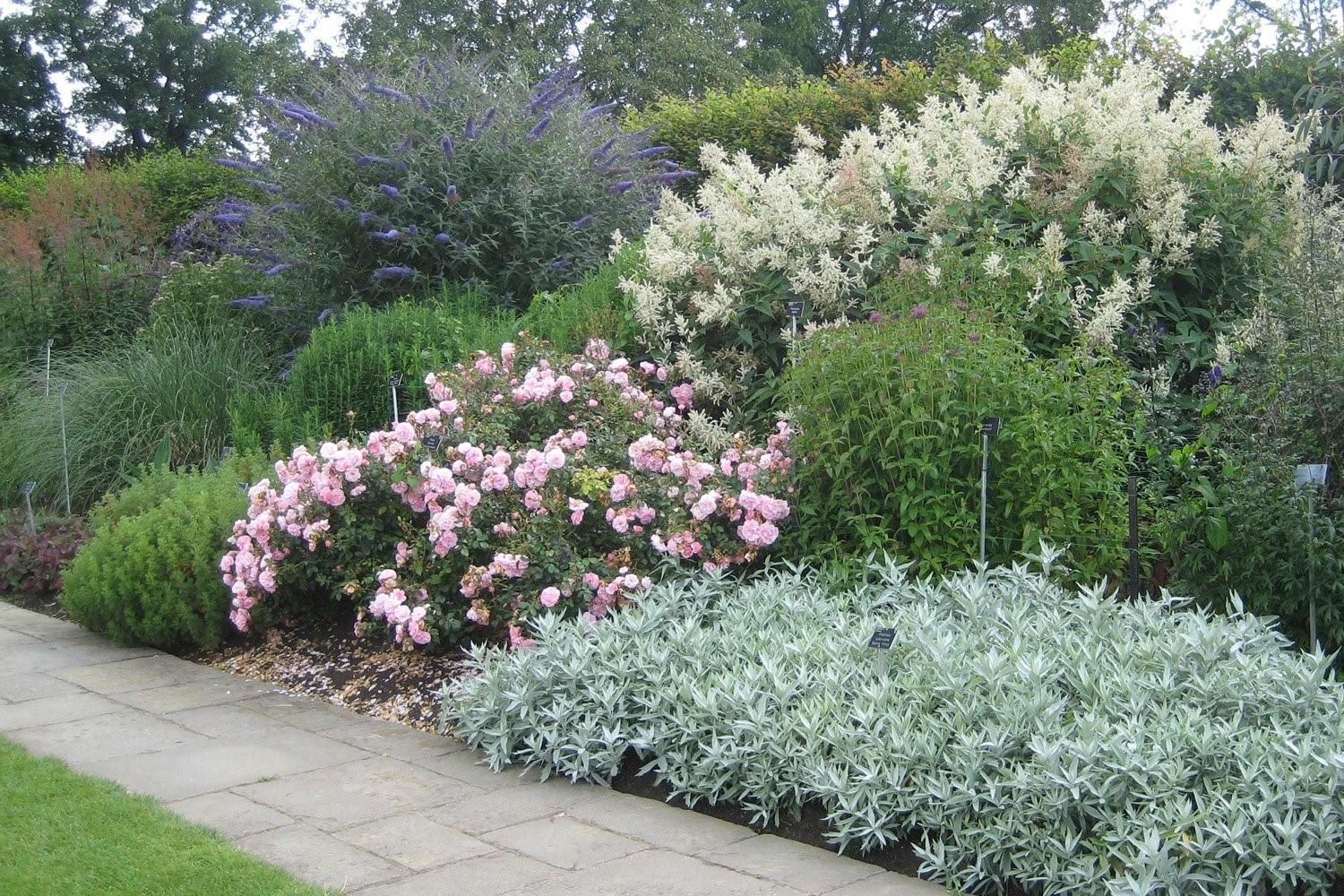Content
The oleaster plant is a very beautiful shrub with a symmetrical, spreading crown. Some species produce silvery foliage, forming an original background for bright flowers and other ornamental crops. Sucker is unpretentious and tolerates drought and frost well. It requires only minimal care - this is discussed in more detail in the material presented.
Description and photo of the bush
The oleaster plant is a fruiting shrub from the family of the same name. It also brings together low-growing trees of different species - all of them. The culture originates from Japan, China and Europe. At the same time, in Russia, only the Elf angustifolia species is found under natural conditions. It can be found in the southern regions, as well as in Siberia.
Elf, also called pshat, is a deciduous shrub or tree (although evergreens are also found in warm countries). The foliage is arranged alternately and grows on short petioles. The type is simple, the shape is elongated, it can also be oval. The plates have a matte surface, painted dark green, wedge-shaped at the base, pointed tips.The length can vary greatly - from 2 to 10 cm. At the same time, the width is about 1-5 cm.
The branches of the oleaster plant are often prickly and covered with numerous silvery scales. They grow vertically or at a slight angle, reaching a height of 1 to 4 m. The rhizome of the plant is very developed and can diverge from 8 m from the main stem. This allows the shrub to survive drought and other adverse weather events.

The tree reaches a height of 3-4 m
The oleaster plant blooms beautifully. It produces numerous small yellow flowers. As a rule, they have a pleasant aroma that attracts insects. Therefore, the shrub is considered a honey plant. Typically the flowering period occurs in June-July. From the photo and description of the plant it follows that the sucker is a shrub with berries. They form in late summer and early September.
Biologically, they are not berries, but drupes, since they contain only one hard seed. In shape and size they resemble sea buckthorn, although the color is not orange, but scarlet, and a silvery coating is noticeable. The fruits of the oleaster plant are juicy and quite tasty, with a balance of sweet and sour notes. Partly similar to lingonberries. At the same time, the seeds are very large and there is little pulp. Therefore, shrubs are mainly cultivated purely for decorative purposes.
Types of oleaster plants with names and photos
There are about 100 species of the oleaster plant, the most famous of which are:
- Elaeagnus angustifolia, which I also call eastern. It is light-loving and drought-resistant.Suitable for single plantings, looks beautiful in a hedge. Flowering and fruiting begins at 3-5 years.
- Silver oleaster (Elaeagnus commutata) is a low shrub up to 4 m with grayish leaves. It begins to bear fruit only from 7-8, and sometimes from 10 years. It is characterized by high winter hardiness - it does not freeze even at -40 degrees.
- Elaeagnus multiftora Thunb, also called gummi. It is found mainly in China and Japan. It reaches a height of only 1.5 m, and is distinguished by shoots with brown-red scales.
- Elaeagnus pungens is interesting because of its yellowish-green leaves with an original pattern. The tree is quite tall, growing up to 7 m in height. The crown is spreading and large, the branches are covered with thick needles, which is what the name of the species is associated with.
How to grow a sucker plant
You can plant the oleaster plant in early spring (from late March to mid-April), as well as in late autumn (from late October to mid-November). The seedlings are winter-hardy, so there is no need to worry about cold weather. A well-lit place is suitable for gestation, although shading is also allowed, but only for a few hours.
The shrub withstands winds well, so you can plant it even in an open area, for example, at the border of the garden. But it should be noted that the root system does not tolerate prolonged stagnation of water. Therefore, lowlands should be excluded - it is better to give preference to hills.
As for the soil, there are no special requirements. The oleaster plant takes root even on dense clay soils and depleted stone soil. In extreme cases, when digging, it can be fertilized with compost (5 kg per 1 m2) or complex mineral fertilizer (40-50 g per 1 m2).
The process of planting a sucker plant looks like this:
- Dig a large hole 70 cm deep and wide.
- Adjacent holes are formed at a distance of at least 2 m.
- Small stones are placed at the bottom.
- Then fertile soil is laid.
- Place the sucker plant seedling in the center and straighten the roots.
- Sprinkle the soil so that the root collar goes to a shallow depth.
- Water with settled water and after a few days lay mulch.
They are placed approximately along the radius of the future crown, i.e. 2.5-3 m from the center of the planting hole.
Plant care
Elf is an unpretentious plant, but needs periodic watering, especially during drought. Young seedlings are given a bucket of water weekly. As for adult plants, they tolerate drought well, so they no longer need additional moisture.
One of the basic rules for growing and caring for the oleaster plant is periodic loosening of the soil. This is especially important after heavy rains. If necessary, weeds are removed from the tree trunk circle.
As for fertilizing, it is not necessary to apply them. The rhizomes spread to great depths and are able to independently provide the plant with nutrients. In addition, bacteria live on the roots and fix atmospheric nitrogen.
An important requirement for caring for the sucker plant is pruning. In early spring, frozen, diseased and dried branches should be removed. In the fall, you can do a shaping haircut. Root shoots are also removed every summer.

The sucker plant requires virtually no care.
Reproduction methods
The culture can be propagated in several ways:
- root suckers;
- cuttings;
- from seeds.
The plant produces a large number of suckers that can be dug up and planted throughout the spring, summer and fall. But you need to act immediately so that the planting material does not dry out. In addition, you need to take into account that the rhizome grows well and over time can interfere with neighboring crops.
To take cuttings from the oleaster plant, at the end of autumn I cut lignified shoots 10-15 cm long. They are planted in open ground and mulched. Next spring, actively water and feed. It should be taken into account that growth is slow, and some seedlings may not take root.
Growing sucker from seeds is also quite accessible. They are collected independently, completely cleared of pulp and dried. Then they are planted in greenhouses at the end of October. Cover with mulch, remove the cover in early spring and actively care for the seedlings. When they get stronger, they are transplanted to a permanent place.
Diseases and pests
The oleaster plant rarely suffers from disease. Only due to heavy rains and heavy watering can it become infected with a fungal infection. If suspicious plaque or spots have formed on the leaves, they should be removed and then treated with a fungicide:
- "Fundazol";
- "Abiga Peak";
- "Maksim";
- "Tattu."
Sometimes aphids, roseate leafworm, weevils and berry bugs accumulate on the foliage and shoots. To cope with the invasion, do 1-2 treatments with an insecticide solution:
- "Aktara";
- "Fitoverm";
- "Decis";
- "Fufanon."
Useful properties of the oleaster plant
Despite the fact that the berries of the oleaster plant are rarely used as food, they are valued for their rich vitamin and mineral composition:
- organic acids;
- tannins;
- essential oils;
- flavonoids;
- coumarins;
- catechins;
- vitamins A, C, group B;
- phosphorus;
- calcium;
- potassium;
- iron;
- magnesium;
- zinc.
Thanks to this, the sucker plant has beneficial properties:
- anti-inflammatory effect;
- astringent effect;
- cleansing the body of harmful substances;
- antibacterial effect;
- wound healing;
- antipyretic.
Methods of application
The berries can be used raw, made into juice, as well as decoctions for internal use. They help treat inflammatory diseases, including sore throats and diseases of the digestive system. They are also used as a tonic and general strengthening agent. For example, you can take two tablespoons of berries per glass, cook in a water bath for 15 minutes, leave for an hour, strain and consume throughout the day.
The fruits of the oleaster plant are also used in cooking as an addition to side dishes or meat dishes. Sometimes they are added to the dough like raisins to make sweet pastries. You can make fruit drinks, compote and even jam based on the berries. Sometimes they are even used to prepare alcoholic tinctures.
Sucker in landscape design
The oleaster plant is quite spreading and produces a crown of relatively regular shape. Thanks to flowering and fruiting, it remains decorative throughout the season. It is often used in single plantings to organize space. Particularly valuable is the silver sucker, which creates a unique background of a greenish-gray hue. Bright red and pink flowers look beautiful on it.
The shrub can also be used in compositions with other plants that have golden or brown, reddish foliage. They form contrasting ensembles that will decorate any garden.The oleaster plant combines especially well with low spruce and thuja. Several ways to use shrubs in garden design are shown below:
- Decorative composition.
- Landing next to the road.
- Accommodation close to home.
- Single landing option.
- Plant next to the bench.
Conclusion
The gooseberry plant is well suited for decorating small gardens, spaces near the house, gazebo and other recreation areas. Valued for its decorative crown, beautiful leaves and bright flowering. In addition, the culture is unpretentious and practically does not require care.

















